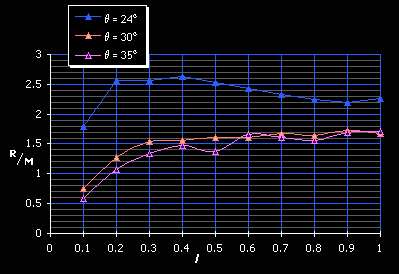 |
|
|
|
|

|
|
Analysis
The values of R/m are very similarly related to the differences between experimental and theoretical data. This confirms the validity of R/m as an aid to adjusting the theoretical predictions. The downward bump in the data for l = 0.5, q = 35°, is also reflected in the differences between theoretical and experimental data. On a larger scale: q = 24° remains considerably greater than other values of q . As l increases R/m stabilises, this shows that the friction exerted on the object has a limit. When the ratchet socket has a long slide the friction ceases to increase. This indicates that the socket ratchet has to overcome initial resistive force or friction. The use of R/m would greatly improve the accuracy of predictions of where an object will fall when dropped down a slide, this is confirmed by its close relation to the differences between the models. EvaluationOn reflection, the experimental collection of data went without any problems. All aspects mentioned when reducing error were carefully followed to give accurate results when collecting the experimental data. Using Excel to calculate the theoretical data saved time in the long run. The formulae, after being type in once, could be copied down to calculate all values of l and q . The formulae in Excel were checked rigorously against written formulae to minimise mistakes. Use of the program also made any error correction of formulae easy. It was also very practical for displaying results in tabulated and as graphs. |